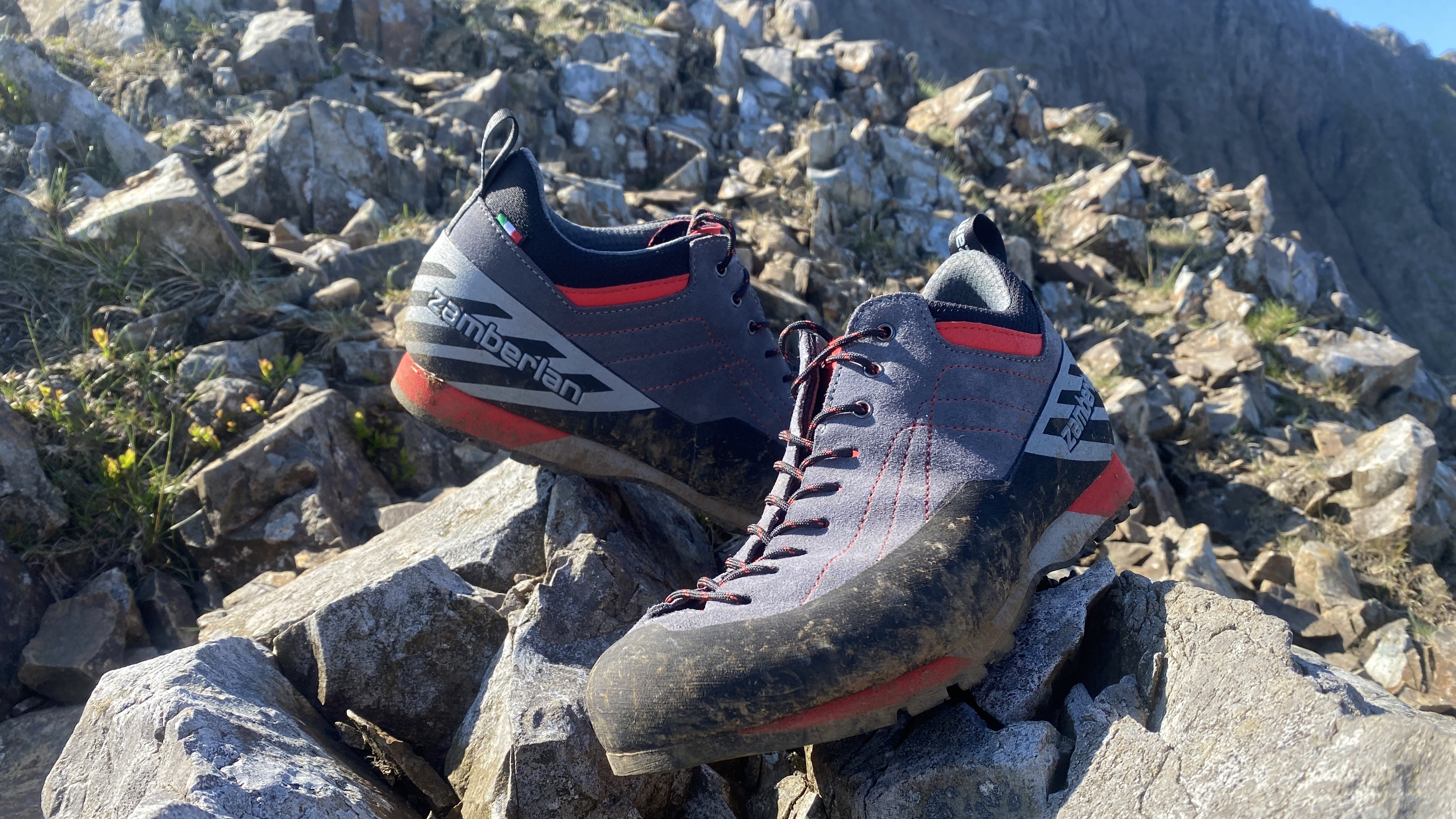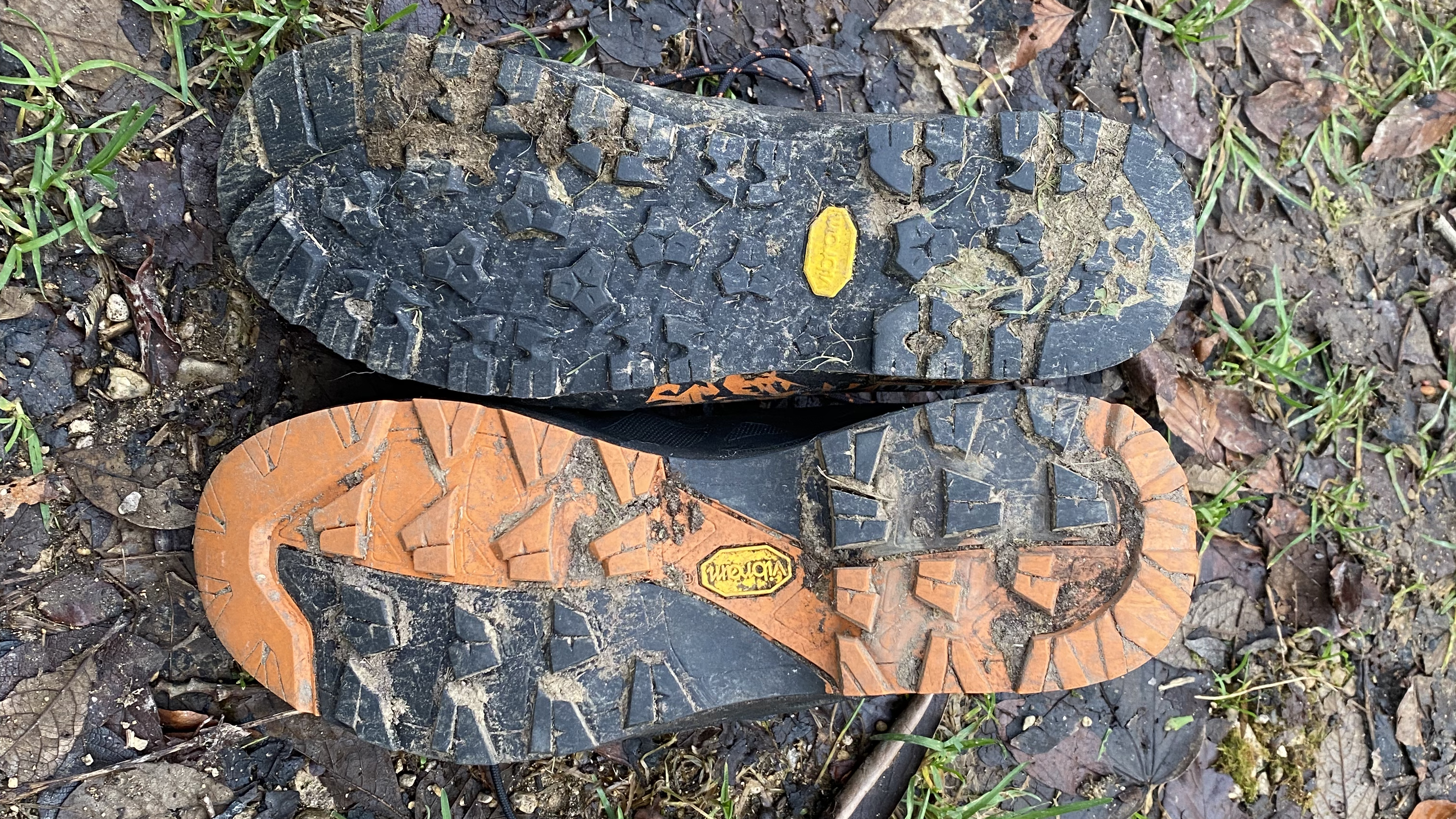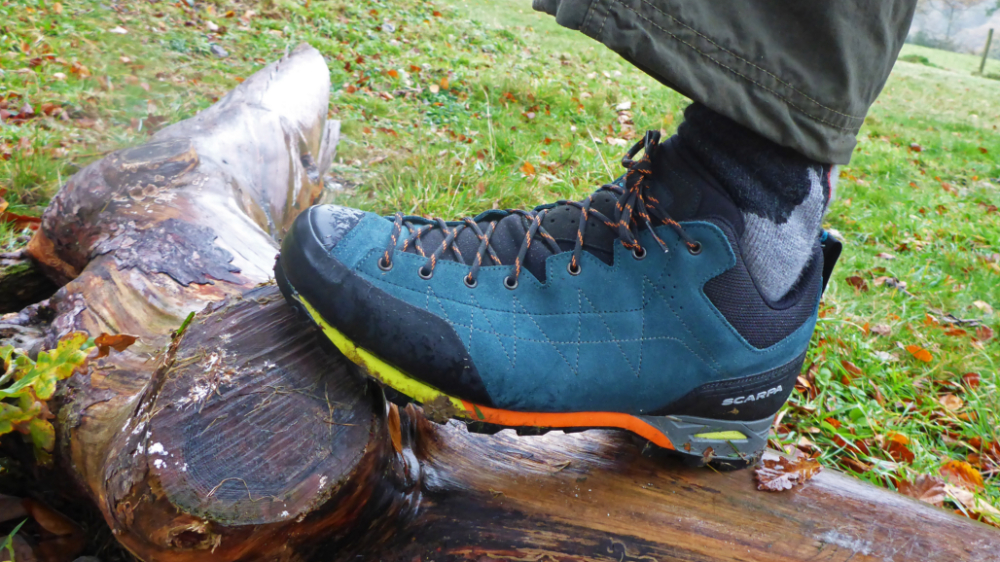What are approach shoes? Our expert guide to these technical pieces of footwear
In store or on the web, you've perhaps wondered: what are approach shoes? Our experts go into what sets them apart from standard hikers

What are approach shoes? It's a question often asked by the uninitiated. They certainly look like hiking shoes but a quick look under the bonnet reveals features to suit rock climbers. Are they for rock climbers or are they for hikers, or both? And how much of a difference do they make on difficult terrain?
We're here with a couple of our mountaineering experts to answer these questions, revealing the approach shoe in all its technical glory.
What are approach shoes?
Approach shoes offer some of the comfort of a hiking shoe with some of the sticky grip, capability and precision of a rock climbing shoe. They appeared on the market around 30 years ago and have been gaining popularity ever since.
Approach shoes excel on technical, rocky ground, such as scrambling or easy climbing terrain. They typically feature more sophisticated lacing than hikers, while their outsole tends to be more rigid than most. The sole usually features flat areas at the toes and the heel, which are designed for maximum traction when edging or smearing.
The ‘approach’ in the name refers to their use by rock climbers. Often it's the case that – especially in the mountains – the technical part of a climb is reached by walking substantial distances and scrambling over easier terrain to reach the main cliff, crag or buttress. Once the climbing is finished, there’s usually a bit of a hike back to the trailhead. As established, approach shoes are great on difficult terrain, while they're also perfectly comfortable to hike long distances in.
In contrast, Climbing shoes are not designed for walking, as anyone who has ever tried to cover any sort of distance in them will know. They’re pretty uncomfortable.
| Situation | Climbing shoes | Approach shoes | Hiking shoes / boots |
| Hiking terrain | Totally inappropriate, very uncomfortable | Well suited but not quite as stable or durable as hiking shoes | Perfectly suited to the mixed surfaces encountered when hiking |
| Scrambling terrain | Inappropriate for lengthy scrambles | Perfect for moving across scrambling terrain with confidence | Pretty decent but not as refined as approach shoes |
| Climbing terrain | Perfect for providing grip and precision | Decent, but not as precise as climbing shoes for harder routes | Unsuitable for harder climbs due to lack of grip and precision on rock |

Meet the experts

An editor and writer based in Australia, Ross is a life-long rock climber (he is usually found in the Grampians) who founded Vertical Life. He was also the long-term editor of Wild magazine, Australia’s oldest magazine about hiking, camping, backpack pursuits and environmental issues. Ross once had to organise and take part in a photo stunt that involved getting a load of climbers on top of a hot air balloon for a tea party.

Alex is a Mountain Leader and former President of the London Mountaineering Club. He counts scrambling among his favorite activities and will often wear approach shoes on easier climbing routes too. He’s completed most of the UK’s classic ridge traverses, such as the Aonach Eagach in Glen Coe, Ledge Route on Ben Nevis and Liathach in Torridon.
Why do you need approach shoes?
- Approach shoes are much better suited to hard scrambles and easy climbs than standard hiking footwear
- If you enjoy scrambling, via ferratas or climbing, approach shoes are a wise purchase
If you're into "exciting" mountain terrain, there are several reasons you need approach shoes. Wearing heavy hiking boots to approach a crag used to mean that climbers had to then haul their weight up as they climbed: not ideal. The lighter option of wearing hiking shoes or trail running shoes also hits a snag once technical ground is encountered before the main climb. Here we're talking about terrain too challenging for shoes that are designed to grip muddy trails, rather than rock faces.
All the latest inspiration, tips and guides to help you plan your next Advnture!
Enter the approach shoe, the ideal halfway house between the climbing shoe and the best hiking shoe. They are much comfier than climbing shoes for taking on hard scrambles and easier climbs, the sort where you still might be moving fast and doing plenty of walking and clambering between more vertical sections. Meanwhile, an approach shoe's grippy and rigid sole gives you much more confidence and stability in this potentially dangerous middle ground between scrambling and climbing.
In short, if you're a rock climber who often heads to the mountain crags or an adventurous hiker who enjoys scrambling, via ferratas and easy climbing, approach shoes are exactly the right fit for you. They also look great in the bar afterwards.
The features of an approach shoe
- Approach shoes tend to have a softer rubber that provides excellent traction on rock
- The sole features flat areas at the toes and heel for edging and smearing
- They're usually stiffer across their length, which makes them more suited to edging
- They tend to be narrower for jamming into cracks in rock
- Protection from rock abrasion is often supplied by a protective rand

I used to do a lot of my scrambling in trail running shoes. However, the difference approach shoes make when edging on small footholds is massive and gave me the confidence to move up to higher grades.
Alex Foxfield, Mountain Leader
What is an approach shoe in terms of its features? Well, approach shoes are not that dissimilar to a standard hiking shoe but they have a couple of important differences. The first is that they are normally shod with the same rubber used on climbing shoes, which is a softer, more sticky compound that gives way more grip on rocky terrain. Many of the finest approach shoes use Vibram's Megagrip compound, which provides excellent traction on both dry and slick surfaces. Standard hiking shoes use a harder rubber compound that is more durable but doesn’t provide anywhere near the grip on rock.
Another feature usually seen in approach shoes, as well as winter hiking boots and other mountaineering footwear, is flatter regions on the sole towards the toes and heel. These flatter regions provide climbing shoe style grip when edging and smearing.
Approach shoes tend to be a bit stiffer across their length for edging, a rock climbing term for using the side of your shoe to step on small holds or ‘edges’ sticking out of the rock. This rigidity is what makes approach shoes more suitable when it comes to safety on technical ground. As well this, they are usually narrower for jamming into cracks in the rock. Many approach shoes will also have a rubber rand around the side to provide more grip when they’re placed in cracks, which also protects the shoe’s stitching from being damaged.
As a rule, approach shoes also have a loop on the heel tab that is easily clipped into a karabiner and attached to a harness. This makes them easily interchangeable with climbing shoes, which have the same feature.
What are the uses of an approach shoe?
- Climbers use approach shoes for approaches to crags and easier climbs
- They can be used in winter so that the walk in doesn't have to be done in heavier boots
- Approach shoes are great for hikes with lots of scrambling
- They're very well suited to via ferrata routes

What are approach shoes' main uses? Approach shoes are obviously primarily designed for climbers, who spend most of their time in rocky places and enjoy the increased security and safety of having something super secure on their feet when accessing crags. Many climbing guides also wear them when taking their clients up easy routes. Working out what kind of difficulty level you are comfortable with in approach shoes compared to climbing shoes means having a good grasp of climbing rating systems and the experience of a few climbs under your belt – or harness, as it were.
Approach shoes are also preferable to hefty winter boots when there's a long walk in to a winter walk or climb. There's no need to trudge along easy trails for kilometer after kilometer in your B2s if there's room in your day pack for them. Instead, give your feet a rest and let them enjoy the feel of approach shoes until you reach the snow line. Bear in mind though, that approach shoes won't keep your feet warm like winter boots will, so there's always a compromise.

They are also perfect for hikers who enjoy traversing exposed, rocky ridge lines or enjoy hikes with some easy scrambling. The only downside for some hikers may be the extra stiffness or lack of insulation in cold weather, although there are some heavier approach shoes designed for the greater ranges that are better insulated.
They're also very well suited to via ferrata, the pursuit of following a technical rock route that's been made safer with the use of a wire to clip into and other forms of fixed protection.
What is an approach shoe to the very best in the business? Do the pros and stars of the rock-climbing world bother with them. Well, in the right hands (or feet, to be accurate), approach shoes also have the ability to take on some formidable vertical terrain, as proved by legendary climbers Alex Hannold and Tommy Caldwell. The American duo mostly wore approach shoes on the long-awaited Fitz Roy Traverse in Patagonia, often climbing together up to a grade of 5.10 (as hard as most regular climbers will ever climb) in their approach shoes. They only switched to proper rock climbing shoes when things got a little too tasty.
How to choose approach shoes

The first commercial approach shoe was the legendary Five Ten Guide Tennie, but these days nearly all climbing and technical mountaineering shoe brands produce their own approach shoes, including the following:
The best way to pick an appropriate approach shoe is to try a bunch on and see how they feel. If you imagine approach shoes on a continuum between a pure climbing shoe and a pure hiking shoe, then you’ll find that some models will be more focused on rock performance while others are aimed at the hiking end of the spectrum. If you enjoy trad climbing or often head onto long, multi-pitch sport climbing routes, you will want something that is geared towards rock performance, with a stiffer sole, sticky rubber and performance fit.
Whereas if you’re after more comfort for walking and occasional scrambling, you can get something softer and less specialised with bigger sole lugs for muddy trails, such as Aku's Rock DFS GTX.
